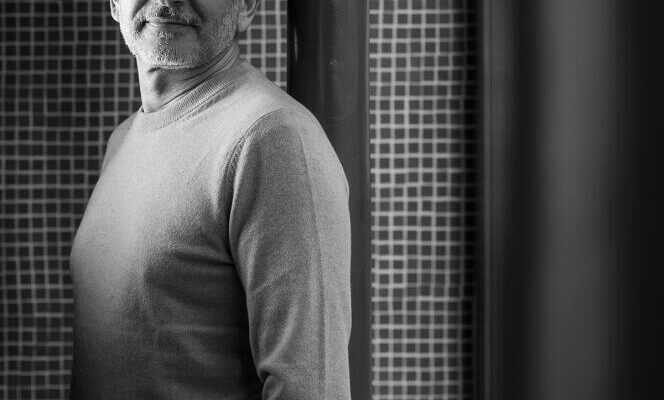I am Jewish from North Africa, from a Moroccan family on one side, French from Algeria on the other. I was born in Casablanca, in a warm, hospitable, caring country. When I was old enough to go to college, we moved to Bourg-la-Reine, in the Paris suburbs. A grayer, colder and a little more complicated climate, but also a place where cultures mix and social classes rub shoulders. After wandering around a bit between baccalaureate, prep school, and university, I started working in an advertising agency at the age of 20. I was lucky enough to be surrounded by kindness, to meet great advertisers who took me under their wing and learned the profession.
At 30, I took charge of a design agency within a large communications group. One day, chef Michel Bras arrived at the agency with his book. This was the time when he was building Le Suquet, his new gastronomic brand in Laguiole, in Aveyron, with architect Eric Raffy. We designed graphic elements for the Bras family (notably the logo of their new identity), and this is how I established my first links with the world of gastronomy.
I then met Jean-Pierre Coffe, Alain Ducasse and even the wonderful journalist Marianne Comolli (1939-2016). I have always loved eating: Shabbat dafina, an incredibly hearty dish made from meats and starchy foods that you cook the day before, vegetables, like artichokes, which fascinate me as they require so much work and effort. devotion, or old-fashioned caramel creams, the likes of which you no longer find anywhere in restaurants. However, it is a very simple dessert and just perfect when the caramel is pushed to the limits of bitterness and you don’t add too much sugar…
With the chefs, I learned to taste, to understand the combinations of flavors and discovered the world of service and excellence. And then, in the wake of Ducasse, I met Frédérick Grasser, an extravagant gourmand, who introduced me to her husband, Pierre Hermé, then a pastry chef at Fauchon. A few years later, we joined forces and joined Ladurée, before setting up our own company, Pierre Hermé Paris. People said of me that I was Pierre Hermé’s “Pierre Berger”, that annoyed me. Above all, we were driven by a common creativity.
After the gradual takeover of the brand by L’Occitane, I sold my shares. In 2020, I discovered Dengo, a Brazilian chocolate brand. I understood to what extent the world of chocolate is ambivalent, synonymous with pleasure and wonder, on the one hand, and, on the other, with an industry often linked to poverty and deforestation. By taking the reins of Dengo Europe, I embarked on the internationalization of a farmhouse, fair trade and eco-responsible chocolate. I know today that the pleasures of the table cannot go without awareness, an assumption of responsibility, because food is both the problem and the solution.
Dengo Stores19, rue Yvonne-Le-Tac, Paris 18eand 58, rue Bonaparte, Paris 6e.
